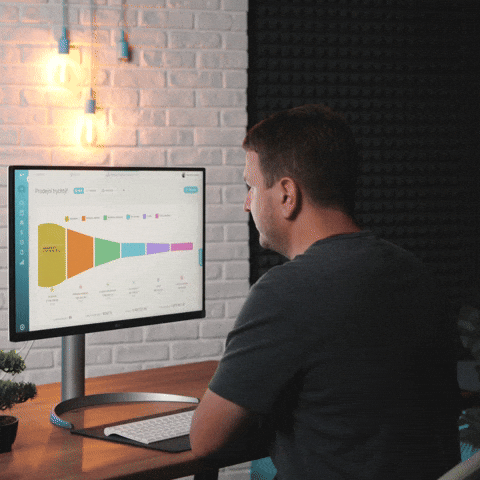When you think about the journey a customer takes from discovering your brand to making a purchase, it’s helpful to visualize it as a funnel. At the top of this funnel, you have awareness, where potential customers first learn about your product or service.
This stage sets the foundation for everything that follows. You want to capture their attention and make a memorable impression. This can be achieved through various channels such as social media, blogs, or even word-of-mouth referrals. The goal here is to create a broad base of potential customers who are interested in what you have to offer.
As you move down the funnel, you enter the consideration stage. Here, your audience is evaluating their options and comparing your offerings with those of your competitors. This is where you need to provide valuable information that helps them make informed decisions.
Think of it as nurturing a relationship; you want to engage with them through informative content, testimonials, and case studies that highlight the benefits of your product or service. By understanding the different stages of the marketing funnel, you can tailor your strategies to guide potential customers smoothly from one stage to the next.
Subcribe to get free tips and resources >
Key Takeaways
- The marketing funnel represents the customer journey from awareness to purchase, and understanding its stages is crucial for effective marketing strategies.
- Compelling content is essential for attracting and engaging potential customers at every stage of the marketing funnel.
- Landing pages should be optimized to capture leads and encourage conversions, with clear and persuasive messaging and design.
- Effective calls-to-action prompt action from potential customers and should be strategically placed throughout the marketing funnel.
- A/B testing allows for the comparison of different marketing strategies to determine the most effective approach for lead generation and conversion.
- Email marketing is a powerful tool for nurturing leads and maintaining engagement with potential customers.
- Social proof, such as customer testimonials and reviews, can be leveraged to build trust and credibility with potential customers.
- Continuous improvement is achieved through thorough analysis of marketing efforts and making adjustments based on data and insights.
Creating Compelling Content
Content is at the heart of any successful marketing strategy. When you create compelling content, you’re sharing information and telling a story that resonates with your audience. This could be in the form of blog posts, videos, infographics, or podcasts.
The key is to understand what your audience cares about, and deliver content that addresses their needs and interests. By doing so, you position yourself as an authority in your field, which builds trust and encourages potential customers to engage with your brand.
Moreover, compelling content should be engaging and shareable. Think about how you can incorporate visuals, anecdotes, or even humor to make your content more relatable. You want your audience to feel connected to what you’re saying, which can lead to increased shares and wider reach. Remember, the more valuable and engaging your content is, the more likely it is to attract and retain your audience’s attention throughout their journey in the marketing funnel.
Optimizing Landing Pages

Once you’ve captured your audience’s interest with compelling content, the next step is to direct them to landing pages that convert visitors into leads or customers. An optimized landing page is essential for achieving this goal. Start by ensuring that your landing page has a clear and concise message that aligns with the content that brought visitors there in the first place. This consistency helps reinforce their interest and encourages them to take action.
In addition to clarity, consider the design and layout of your landing page. A clean, visually appealing design can significantly enhance user experience. Make sure that important information is easily accessible and that there are no distractions that could divert attention away from your call-to-action.
Incorporating elements like bullet points, images, and testimonials can also help convey your message more effectively. Ultimately, an optimized landing page should guide visitors seamlessly toward taking the desired action, whether it’s signing up for a newsletter or making a purchase.
Implementing Effective Calls-to-Action
A well-crafted call-to-action (CTA) can make all the difference in converting potential customers into actual ones. Your CTA should be clear, compelling, and action-oriented. Instead of using generic phrases like “click here,” try to be more specific about what users will gain by taking action. For example, “Get Your Free E-Book Now” or “Start Your Free Trial Today” provides a clear incentive for users to engage further with your brand.
Placement is also crucial when it comes to CTAs. You want them to be prominent but not intrusive. Consider placing them at strategic points throughout your content or on landing pages, where they naturally fit within the flow of information.
Experimenting with different colors, fonts, and sizes can help determine what resonates best with your audience. Remember, an effective CTA encourages immediate action and reinforces the value proposition you’ve been communicating throughout the customer journey.
Subcribe to get free tips and resources >
Utilizing A/B Testing
A/B testing is a powerful tool that allows you to make data-driven decisions about your marketing strategies. By comparing two versions of a webpage, email, or ad against each other, you can identify which one performs better in terms of engagement and conversion rates. This process involves changing one element at a time—such as headlines, images, or CTAs—to see how it impacts user behavior.
The insights gained from A/B testing can help you refine your approach and optimize your marketing efforts. It’s important to approach A/B testing with a clear hypothesis in mind. What do you expect to achieve by making this change?
After running tests for a sufficient amount of time to gather meaningful data, analyze the results carefully. Look for patterns and trends that can inform future decisions. Remember that A/B testing is not a one-time effort; it should be an ongoing practice that allows you to continuously improve your marketing strategies based on real user feedback.
Nurturing Leads with Email Marketing

Personalization: The Key to Enhanced Engagement
Personalization is crucial in email marketing. Addressing recipients by name and tailoring content based on their preferences can significantly boost engagement rates. This personalized approach helps create a sense of connection with your audience, making them more likely to respond to your messages.
Segmentation for More Relevant Messages
Segment your email list based on user behavior or demographics. This allows you to send targeted messages that resonate with specific groups within your audience. By doing so, you can increase the relevance and effectiveness of your email campaigns.
Consistent Communication for Long-Term Success
Consistent communication through email helps keep your brand top-of-mind and encourages leads to move further down the marketing funnel. Whether it’s sharing exclusive offers, providing valuable resources, or simply checking in with subscribers, regular email communication is essential for building trust and nurturing leads over time.
Subcribe to get free tips and resources >
Leveraging Social Proof
Social proof is a powerful psychological phenomenon that influences consumer behavior. When potential customers see that others have had positive experiences with your brand—through reviews, testimonials, or case studies—they are more likely to trust you and consider making a purchase themselves. Incorporating social proof into your marketing strategy can significantly enhance credibility and encourage conversions.
To effectively leverage social proof, showcase customer testimonials prominently on your website or landing pages. You might also consider creating case studies that highlight how your product or service has solved specific problems for real customers.
Don’t underestimate the power of user-generated content; encouraging satisfied customers to share their experiences on social media can amplify your reach, and attract new leads who are influenced by their peers’ opinions.
Analyzing and Adjusting for Continuous Improvement
The final piece of the puzzle involves analyzing your marketing efforts and making adjustments based on performance data. Regularly reviewing metrics such as website traffic, conversion rates, and engagement levels will provide valuable insights into what’s working and what needs improvement. This process allows you to identify trends over time, and make informed decisions about where to allocate resources for maximum impact.
Continuous improvement is essential for success. Don’t be afraid to experiment with new strategies or tools based on your findings. Whether it’s refining your content approach, optimizing landing pages further, or adjusting email campaigns based on open rates, staying agile will help you adapt to changing audience preferences and market conditions. By committing to ongoing analysis and adjustment, you’ll ensure that your marketing efforts remain effective and aligned with your business goals over time.
Conclusion
Mastering these elements of marketing—from understanding the funnel to leveraging social proof—will empower you to create a more effective strategy that resonates with your audience and drives results. Embrace each step as an opportunity for growth and improvement in your marketing journey!
If you are interested in learning more about how artificial intelligence is impacting marketing strategies, check out this insightful article written by an AI. Understanding the role of AI in marketing can help businesses optimize their marketing funnel and improve overall performance.
Subscribe for useful tips and resources >
FAQs
What is a marketing funnel?
A marketing funnel is a model that represents the stages a customer goes through before making a purchase. It typically includes the stages of awareness, interest, consideration, intent, evaluation, and purchase.
What are the stages of a marketing funnel?
The stages of a marketing funnel typically include awareness, interest, consideration, intent, evaluation, and purchase. These stages represent the customer’s journey from being aware of a product or service to making a purchase.
Why is a marketing funnel important?
A marketing funnel is important because it helps businesses understand and track the customer’s journey, allowing them to tailor their marketing efforts to effectively move customers through each stage towards making a purchase.
How can businesses optimize their marketing funnel?
Businesses can optimize their marketing funnel by creating targeted and personalized content for each stage of the funnel, using data and analytics to understand customer behavior, and continuously testing and refining their marketing strategies.
What are some common marketing funnel strategies?
Common marketing funnel strategies include creating compelling content to attract and engage customers, using email marketing to nurture leads, offering incentives and promotions to encourage purchase, and providing excellent customer service to retain customers.



